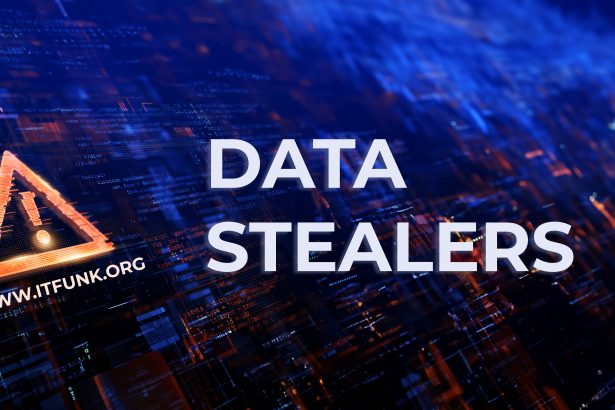Bofamet Stealer is a sophisticated infostealer malware that harvests sensitive data such as browser credentials, cookies, cryptocurrency wallet details, and system information. Often bundled within cracked software, cheat tools, or disguised as legitimate utilities, it quietly exfiltrates data to attacker-controlled servers.
Threat Overview
| Attribute | Details |
|---|---|
| Threat type | Infostealer / data stealer |
| Detection names | Typically labeled as “Trojan‑Infostealer” by AV vendors |
| Symptoms of infection | Browser slowdowns, unusual network traffic, unknown background processes |
| Damage | Theft of passwords, cookies, crypto wallet keys; potential identity & financial theft |
| Distribution methods | Bundled with cracked/pirated software, cheat tools, fake updates |
| Danger level | High – sensitive data can be exploited for large financial and reputational harm |
| Removal tool | SpyHunter (Download SpyHunter) |
In-Depth Evaluation
How I Got Infected
Infections happen when users download software from unofficial sources—often tools for games, “free” software, or fake updates. Attackers bundle the stealer with appealing payloads, tricking users into installing it.
What It Does
Once inside, Bofamet Stealer monitors users’ browsers and system files, actively harvesting stored credentials (usernames, passwords), session cookies, and even cryptocurrency wallet files (e.g. from MetaMask, Electrum). It may capture screenshots and log keystrokes to compile a full picture of the user’s digital footprint.
Should You Be Worried?
Yes. With your credentials and financial data compromised, criminals can access your accounts, empty funds from wallets, and even impersonate you. This often results in irreversible damage. This malvert must be removed immediately upon suspicion.
Manual Removal for Bofamet Stealer (For advanced users)
Step 1: Enter Safe Mode with Networking
Since info-stealers may resist removal while active, booting into Safe Mode helps disable their execution.
- Windows 10/11:
- Press Win + R, type msconfig, and hit Enter.
- Go to the Boot tab and check Safe boot → Network.
- Click Apply → OK and restart your PC.
- Windows 7/8:
- Restart your PC and keep pressing F8 before Windows loads.
- Select Safe Mode with Networking and press Enter.
Step 2: End Malicious Processes in Task Manager
- Press Ctrl + Shift + Esc to open Task Manager.
- Look for suspicious processes (e.g., randomized names, high CPU usage, or unknown apps).
- Right-click on them and select End Task.
Common info-stealer process names include StealC.exe, RedLine.exe, Vidar.exe, or generic system-like names.
Step 3: Uninstall Suspicious Programs
- Press Win + R, type appwiz.cpl, and hit Enter.
- Look for unknown or recently installed suspicious software.
- Right-click the suspect entry and select Uninstall.
Step 4: Delete Malicious Files and Registry Entries
Info-stealers leave behind hidden files and registry keys to ensure persistence.
- Open File Explorer and navigate to:
C:\Users\YourUser\AppData\LocalC:\Users\YourUser\AppData\RoamingC:\ProgramDataC:\Windows\Temp
- Open Registry Editor:
- Press Win + R, type regedit, and press Enter.
- Navigate to:
HKEY_LOCAL_MACHINE\Software\Microsoft\Windows\CurrentVersion\RunHKEY_CURRENT_USER\Software\Microsoft\Windows\CurrentVersion\RunHKEY_LOCAL_MACHINE\Software\Microsoft\Windows\CurrentVersion\RunOnceHKEY_CURRENT_USER\Software\Microsoft\Windows\CurrentVersion\RunOnce
- Look for randomized or suspicious registry keys (e.g.,
StealerLoader,Malware123). - Right-click and delete any malicious entries.
Step 5: Clear Browser Data and Reset DNS
Since info-stealers target browsers, you need to clear stored credentials.
Clear Browsing Data
- Open Chrome, Edge, or Firefox.
- Go to Settings → Privacy and Security → Clear Browsing Data.
- Select Passwords, Cookies, and Cached files and click Clear Data.
Reset DNS
- Open Command Prompt as Administrator.
- Type the following commands, pressing Enter after each:bashCopyEdit
ipconfig /flushdns ipconfig /release ipconfig /renew - Restart your computer.
Step 6: Scan for Rootkits
Even after manual removal, some info-stealers may hide as rootkits.
- Download Malwarebytes Anti-Rootkit or Microsoft Safety Scanner.
- Run a deep scan and remove any detected threats.
Step 7: Change All Passwords & Enable MFA
Since info-stealers extract credentials, immediately update passwords for:
- Email accounts
- Banking and finance sites
- Social media
- Cryptocurrency wallets
- Business and work logins
Enable two-factor authentication (2FA) to prevent unauthorized access.
Method 2: Automatically Removing Bofamet Stealer Using SpyHunter (Recommended)
(For users who want a fast, hassle-free solution)
SpyHunter is a professional anti-malware tool capable of detecting and removing info-stealers, trojans, keyloggers, and spyware.
Step 1: Download SpyHunter
Click here to download SpyHunter
Step 2: Install and Launch SpyHunter
- Locate the SpyHunter-Installer.exe file in your Downloads folder.
- Double-click to start the installation.
- Follow the on-screen instructions and launch SpyHunter after installation.
Step 3: Perform a Full System Scan
- Click “Start Scan” to analyze your system.
- SpyHunter will detect any info-stealers, trojans, or keyloggers.
- Click “Remove” to delete all detected threats.
Step 4: Enable Real-Time Protection
- Go to Settings and enable Real-Time Malware Protection to prevent future infections.
Prevention Tips: How to Stay Safe from Info-Stealers
- Avoid Cracked Software & Torrents – They are a major infection source.
- Use Strong, Unique Passwords – Utilize a password manager.
- Enable Two-Factor Authentication (2FA) – Reduces the risk of stolen credentials being misused.
- Keep Software & OS Updated – Patches fix security vulnerabilities.
- Be Wary of Phishing Emails – Do not open attachments from unknown senders.
- Use an Antivirus or Anti-Malware Tool – A good tool like SpyHunter helps detect and remove threats.
Conclusion
Bofamet Stealer represents a serious digital threat, exploiting user trust in cracked software and cheat tools to silently siphon high-value data. If infected, your online security, identities, and finances are at considerable risk. Use a trusted removal tool—SpyHunter—to eliminate the malware and then change all compromised passwords and wallet keys. Always avoid untrusted downloads and keep your antivirus active.




